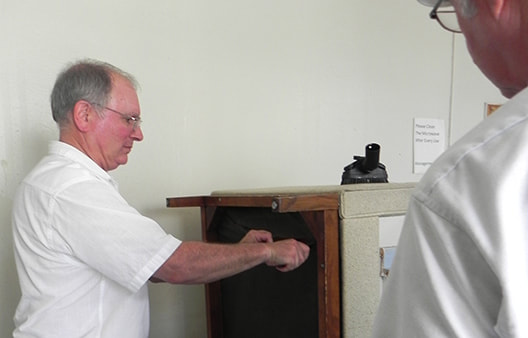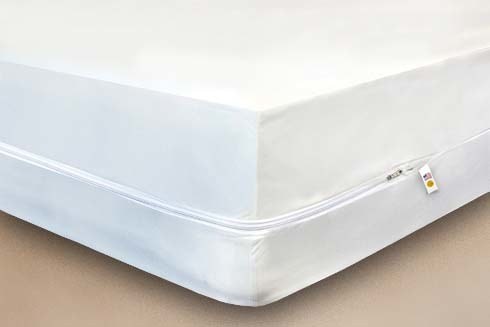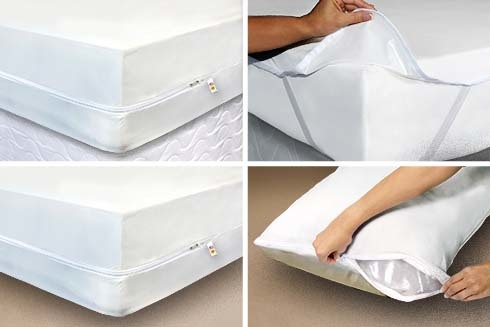No Bed is an Island . . . Or is it ? |
| When we arrive at a bed bug account we will encounter various levels of infestation. While the bed bug ground zeros assuredly make for great photo opportunities and the great stories shared of the extreme conditions, it may be the low level infestations that provide unique challenges possibly because at such locations the bed bugs may prove more difficult to find and finally re-mediate. In any case, no matter what the level of infestation is present at the account, one thing is for sure, the people who live there are being bitten by bed bugs and it’s up to us to save them! |
Just how we save them and what we do may vary by bed bug professional and company. Surely it is said “there a thousand ways to skin a cat” and there are many viable methodologies and techniques that may be successfully utilized to re-mediate a bed bug situation. However, the immediacy in which we are able to remove or eliminate the possibility of bite occurrence is likely of prime importance to those who will be sleeping in the bed bug infested location that night. And, a question often considered is; How can we prevent people from being bitten on bed bug work day one?
When working at bed bug locations a tact preferred is to help people to not get bit tonight and how this can be done. Nearly all of the locations get to visit are of the extreme bed bug ground zero type locations where bed bugs are everywhere and the resident bed bug victims present with numerous bites. This observance initiates the how can we provide immediate relief for these folks mentality or mind set. One method to help prevent bite occurrence is to isolate the bed. That is, to alter the existing conditions such that bed bugs may be prevented from accessing the bed and biting the potential sleeping victim. Is it possible to do this? Sure it is.
The concept of bed isolation is not new or unique. Reference literature indicates that this has been a household home remedy for bed bugs for many years. In the good ole days folks would place bowls or cans of various liquids under the legs of their beds in an effort to keep bed bugs at bay. Liquids used were turpentine, kerosene, soapy water, oil and other materials. Grease and petroleum jelly have been used as well. An experienced bed bug victim once told us of how they treated for bed bugs in “his country” using diesel fuel as an application product. (Hey buddy, got a lite?)
With the advent of the recent bed bug resurgence our industry has seen necessity is the mother of invention in action. Various bed bug blocker devices have been developed and marketed to the industry as well as to the retail consuming public. Chances are many of our readers have used such devices and they are advertised in this publication as well. Such devices may be used to help isolate a bed and prevent bed bug biting.
To isolate a bed we’re trying to make the bed inaccessible to bed bugs such that they cannot access the sleeping host in an effort to prevent the resident from being bitten. To do this we must first inspect and treat the bed thoroughly to assure that there are no bed bugs present on the bed itself. And, while this in itself requires a significant effort, it is possible to do given the required work utilized. Once the entire bed has been rendered bed bug free, we then need to place the isolation devices and methodologies.
| As part of the isolation process we need to install high quality bed bug proof encasements of the mattress and box spring. Doing so takes away the many hiding places present and also may serve to seal in any bed bug eggs or bed bug crawlers that may have inadvertently been missed, if any. We then need to re position the bed such that the bed or any of the bedding garments contact the floor, walls or any neighboring furniture that the bed bugs may use as a bridge to circumvent the bed bug blockers installed beneath the bed legs. When completed correctly we have essentially blocked all access to the bed that bed bugs may use to climb up onto the bed and bite the sleeping victim. All except one possible pathway that is. While it is possible for bed bugs to climb up the wall and across the ceiling to drop onto the bed, bed bug experts argue about the relative possibilities of this specific behavior. And, while we might argue as to this occurrence, the bed isolation effort is not to be done in absence of other control work. Great reduction of the bed bug population present through the control program work will greatly reduce the possibility of this bed bug commando attack occurring. |
While bed isolation as described herein cannot 100% guaranty that a person will not be bitten, it is reasonable to state that the isolation effort will greatly reduce or eliminate the incidence of bed bug bites while the customer is waiting for the remainder of the control program to eventually become 100% effective. And, in so doing, we have provided the customer with some level of immediate relief.
Perhaps bed isolation as described isn’t for everyone and there may be those who simply must have 100% assurance that no bites will occur. For these folks there are other options. In the recent past there are some fellow business travelers who report that they use sleep suits to prevent bed bug bites. However, these suits do not cover 100% of the body so bites may still occur on the hands and face. Recently a bed bug proof tent like device, the Night Safe, has been developed and made commercially available. This device is placed on the top of a bed such that the person simply zips themselves into the bed bug proof tent and sleeps within the tent where bed bugs cannot reach them.
Can we convert a bed into a safe haven for our customers?
Can we prevent a person from being bitten tonight?
Can we do this within the convenience of their own home without too much inconvenience?
Sure we can if we do the right things and provide them with viable methodologies.
Categories
All
Bed Bugs
Biting & Stinging Pest
Carpet Beetle
Contractors
DIY Tips
Education
Events
Fire Ants
Professional Learning
Purchasing A Business
Purchasing A Company
Training
Workshops
Paul J. Bello
Author, Consultant, Speaker, & Educator



